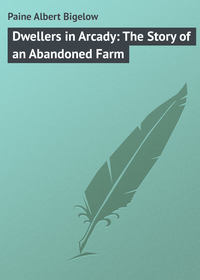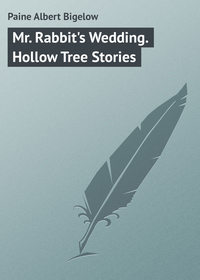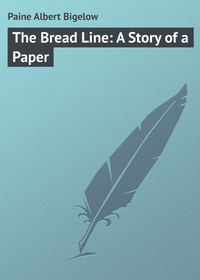 полная версия
полная версияA Little Garden Calendar for Boys and Girls
"Please sing the verse about the story of old," said Davy, when she had finished.
So his mother sang:
"I think, when I read that sweet story of old,How Jesus was here among men,How he called little children as lambs to his fold,I should like to have been with them then."And it was only a moment longer that the Christmas Saint had to wait on the sand-man, for presently the door closed softly on the singer. Davy and Prue had entered the fair garden of sleep.
III
IN THE GARDENS OF CHRISTMAS
I cannot tell you all the wonders of that Christmas. I can only tell you that the presents which the little family had bought for one another were all in their proper places next morning, and that there were ever so many things that nobody but Santa Claus could possibly have brought. There was a Christmas tree, for one thing, the kind of a tree that nobody but Santa Claus ever raises, or brings, and there was everything upon it and about it that a little boy and girl could want, unless they wanted a great deal more than a little boy and girl ought to have, at one time.
But the very finest Christmas gift of all was a splendid great big snow-storm, which had begun in the night and was still going on, as fast and as thick as the big, soft, fleecy flakes could fall. Every few minutes the children left the beautiful tree to look at the beautiful snow. They could hardly wait until breakfast was over, and the Chief Gardener had made a photograph of the tree with them in it, before they wanted to rush out with their sleds.
All at once Davy called Prue to the window.
"Look," he said, "some of these flakes on the window-sash are like little white flowers!"
Then every one came to see, and, sure enough, some of the snowflakes that had fallen next to the glass were wonderfully shaped, and did look like tiny blossoms. The Chief Gardener got a magnifying-glass and they looked at them through it, when they saw how really beautiful they were.
"I have heard them called 'the flowers of winter,'" said big Prue. "There is a little story about how the flowers complained that they must all die when cold weather came, and never see the winter. So then their spirits were allowed to come back as snowflakes."
That was a glorious Christmas. All day the snow came down outside, and all day the big fire blazed and the Christmas tree gleamed and shimmered and sparkled inside. And then, in the afternoon, there was a Christmas dinner which was quite as good as any of the rest of the things, even to the snow. And after the dinner was over, and they sat around the fire, the Chief Gardener said:
"We have had a happy year. I know it has been happy, for the time has gone so fast. It seems not more than a few weeks ago that we were keeping last Christmas, and almost no time at all since Prue and Davy started their first little gardens in the window. Yet, a week from to-day, and that will be a year ago, too. Now, I have a plan. It was Prue who made me think of it. She said something not long ago that I made into a little verse, about annuals, biennials, and perennials. Then Prue made one, too, about herbs and shrubs and trees. Now I propose that we each make some rhymes for New Year's day to celebrate the starting of the window-garden, and also the little garden which Prue and Davy had outside. The rhymes must tell something that has been learned during the year, and they must be short, and easy to remember. Of course, we won't expect very much, but Prue has done so well, that I am sure the rest of us can do something, too."
"I never made any rhymes," said Davy.
"I'll help you," said Prue. "It's just as easy."
So they all agreed, and during the holidays, when the children were not busy with their sleds or books or gardens, they were making rhymes.
IV
SOME VERSES AND THEN GOOD-BY
And these are the rhymes that were read and recited after dinner on New Year's day, just a year after the first little window-garden was started. I shall not tell you whose they were.
Of course, you will all remember little Prue's:
"The kinds of plants are these,Herbs and shrubs, and trees,"and the Chief Gardener's:
"The annuals we plant each spring —They perish in the fall;Biennials die the second year,Perennials not at all,"but the writers of the others you will have to guess.
THE PLANTThe parts of every plant are three —The root, and stem, and leaf they be.The flowers are only leaves more fair,Which nature makes, to bloom and bear.THE ROOTMost roots are hidden in the ground,As they should always be, by rights,But some in other plants are found,And these belong to parasites.THE STEMThe stem may be a stalk or vineTo stand erect, or creep, or twine —For frailest plant, or firmest oakThat's ne'er by storm of winter broke.THE LEAFA leaf has a stem, and of stipules a pair,Though the stipules are often quite small, or not there.A leaf has a blade, and of ribs one or more;While of veins and of veinlets it has many score.A leaf may be simple, or it may be compound,And a million small pores for its breathing are found.THE FLOWERThe blossom has a calyxThat is very often green,And just above the sepalsThe corolla bright is seen.And above the pretty petalsMay be stamens eight or nine —Slender filaments, and anthers,To hold the pollen fine.While in the blossom's centerDoth the sturdy pistil grow,With stigma and with style that leadTo seed-cups just below.HOW PLANTS INCREASEFrom seed and from runner, from stolon bent low —From sucker and slip and from layer they grow —From bulb and from bulblet – from tuber and root,They give us the flower and the grain and the fruit.All thanks to the plants for the clothes that we wear —The food that we eat and the home that we share —For the air that we breathe and the fuel we burn —All thanks to the plants, 'tis our only return.Davy rather objected to the last line of these verses. He said that it was some return to take good care of plants, especially in the hot summer-time, when it was ever so much nicer to sit in the shade. So another little rhyme was made, like this:
A plant should have the sun and airAnd water, and the proper care.If it has these, and doesn't die,We'll reap the harvest, by and by.Then to end the day they all sang a little song about the snowflakes, that Jack Frost sends out of his gardens of winter-time:
THE SNOWFLAKESJack Frost, he makes the snowflakes,He paints the snowflakes white.He sent them Christmas morningTo make our landscape bright.For in the deepest winterThe world is bleak and bare —Jack Frost, he sends the snowflakesTo make our winter fair.And so ends the story of a year, and of its little gardens. Also of Prue and Davy, who owned the little gardens, and of her who was called big Prue and of him who was called the Chief Gardener. Other years will bring other gardens, and other summers. Prue and Davy will grow older, and learn more and more with each year that passes. But no year will ever be happier and no gardens ever brighter than those to which we are now saying good-by.











